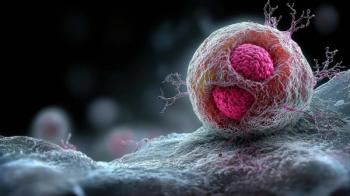
Researchers Connect High Particulate Matter Levels to Development of Breast Cancer
Researchers found an increased risk of breast cancer in women who had higher particulate matter levels near their home.
Individuals residing in an area with high levels of particulate matter (PM2.5) were linked with an increased risk of breast cancer incidence, according to researchers from the National Institutes of Health.
Scientists from the National Institute of Environmental Health Sciences (NIEHS) and the National Cancer Institute (NCI) conducted a large-scale study to define the association between fine particulate matter and the development of breast cancer. The team combined historical air quality data with breast cancer data from a previous study.
“We observed an 8% increase in breast cancer incidence for living in areas with higher PM2.5 exposure. Although this is a relatively modest increase, these findings are significant given that air pollution is a ubiquitous exposure that impacts almost everyone. These findings add to a growing body of literature suggesting that air pollution is related to breast cancer,” said Alexandra White, PhD, lead author and head of the Environment and Cancer Epidemiology Group at NIEHS.
Particulate matter is defined in the press release as a mixture of solid particles and liquid droplets found in the air. The matter is created from motor vehicle exhaust, combustion methods, wood smoke or vegetation burning, and industrial emissions. In the study, the particulate matter pollution measured was 2.5 micron in diameter or smaller (PM2.5). the study notes that these particles are small enough to be inhaled deep into lungs of individuals living in higher particulate matter level areas.
“The ability to consider historic air pollution levels is an important strength of this research. It can take many years for breast cancer to develop and, in the past, air pollution levels tended to be higher, which may make previous exposure levels particularly relevant for cancer development,” said Rena Jones, PhD, senior author and principal investigator of the study at NCI, in the press release.
The press release noted that the current study used data from a previous study — the NIH-AARP Diet and Health Study, that enrolled more than 500,000 men and women from 1995 to 1996, focused on women about 62 years of age for 20 years.
The researchers assessed estrogen receptor-positive (ER+) and receptor-negative (ER-) tumors individually to define the relationship between air pollution and breast cancer variation by the type of tumor. The researchers found that P.M2.5 was connected with a higher risk of ER+ breast cancer but not with ER- tumors. This led the researchers to believe that P.M2.5 can affect breast cancer through an essential biologic pathway of endocrine disruption.
The findings suggest that there is an increased risk of breast cancer in women who had higher particulate matter levels near their home, compared to women who lived near lower levels of PM2.5.
Reference
High levels of particulate air pollution associated with increased breast cancer incidence. EurekAlert!. News release. September 11, 2023. Accessed September 11, 2023.
Newsletter
Stay informed on drug updates, treatment guidelines, and pharmacy practice trends—subscribe to Pharmacy Times for weekly clinical insights.























































































































































































































